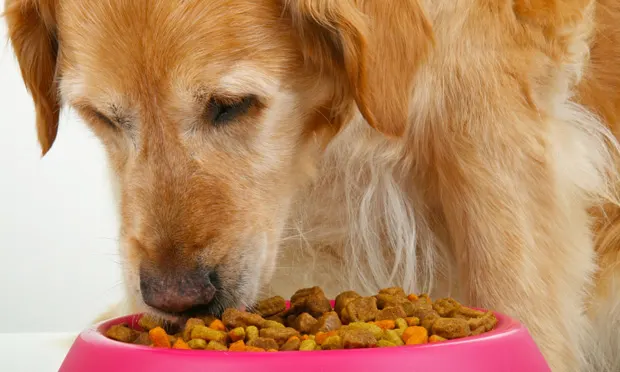Food Trials
Catherine Lenox, DVM, Lenox Veterinary Nutrition Consulting

Adverse reactions to food are common in dogs and cats and can involve GI signs or dermatologic conditions; can be caused by food allergy, food sensitivity, or food intolerance; and may be immunologic or nonimmunologic. Food elimination trials are important diagnostic tools for patients with GI disease or cutaneous adverse food reactions (CAFRs).
Understanding the differences between food trials for food-responsive chronic enteropathies and CAFR is essential to diagnosis and treatment. The pathogenesis of CAFR is poorly understood, but allergy hypersensitivity to food implies an immune-mediated reaction. Food intolerance or sensitivity is a result of nonimmunologic reactions (eg, food poisoning, reactions to food toxins or additives). Dietary indiscretion can also cause adverse reactions to food.1-3
Clinical Signs
Clinical evidence of adverse food reactions include GI signs (eg, vomiting, diarrhea, inappetence) or CAFR. CAFR, the third most common allergic skin disease in dogs (following flea allergy dermatitis and atopic dermatitis), can mimic other dermatologic conditions.2 Clinical signs of CAFR include nonseasonal pruritus, otitis externa, miliary dermatitis, eosinophilic plaques or granulomas, feline lip ulcers, secondary self-trauma, and infections. Adverse food reactions can affect any canine or feline breed of any age.
How I Treat: Food Trials
Institute a complete and balanced veterinary therapeutic diet with limited and novel ingredients or hydrolyzed protein, or use a complete and balanced novel-ingredient homemade diet formulated by an ACVN diplomate.
Do not use over-the-counter (OTC) commercial diets for a food elimination trial.
Consider a complete and balanced homemade diet formulated by an ACVN diplomate for patients with additional special dietary needs.
Inform clients that if the pet is truly food allergic, they cannot offer OTC diets or treats, table scraps, or flavored medication, any of which could trigger an adverse reaction
Diagnosis
Adverse food reactions are diagnosed via food elimination–challenge trials. A positive response to elimination of the dietary antigen or ingredient and a return of clinical signs when the patient is rechallenged with the antigen or ingredient after resolution are necessary for diagnosis. A food elimination trial for GI disease can last 2 weeks, whereas a trial to establish CAFR requires 8 to 12 weeks.1 However, a food elimination–challenge trial does not define the underlying mechanism of the adverse reaction (allergy or intolerance).
Serum allergy testing is not recommended for diagnosing food allergies in dogs and cats, as not all adverse reactions to food are immune mediated, and IgE does not mediate all immune reactions that manifest as CAFR.1,3
If a thorough dietary history can be obtained (see Components of a Thorough Dietary History), a limited, novel-ingredient diet can be tried, provided the protein and carbohydrate sources are novel to the patient and the patient is theoretically not allergic to those sources. Of note, cross-reaction between ingredients is possible.
If a dietary history is unavailable, a hydrolyzed diet is best for a food elimination trial to avoid using an intact protein to which the patient has been exposed; however, reactions to ingredients in a hydrolyzed protein diet are possible. Hydrolyzed protein diets include a protein source that may not be novel but is enzymatically broken down to peptide sizes small enough to prevent immune recognition. The carbohydrate sources in hydrolyzed protein diets are typically intact, but they are often purified starches.
CAFR = cutaneous adverse food reaction, OTC = over-the-counter
How I Treat: Food Trials
Institute a complete and balanced veterinary therapeutic diet with limited and novel ingredients or hydrolyzed protein, or use a complete and balanced novel-ingredient homemade diet formulated by an ACVN diplomate.
The test diet may be the most important part of diagnosing and treating food allergy.
Do not use OTC commercial diets for a food elimination trial.
Three of four venison-based OTC commercial diets were found to contain poultry, soy, or beef protein when analyzed by ELISA.4
Contamination by common dietary antigens can confound results of the food elimination trial and may occur during raw material processing or diet manufacturing.
Without guarantee that OTC diets are produced with the quality needed for a food trial, a veterinary therapeutic novel-ingredient or hydrolyzed-protein diet is best.
Consider a complete and balanced homemade diet formulated by an ACVN diplomate for patients with additional special dietary needs (eg, because of obesity or systemic disease).
A board-certified nutritionist can be found at acvn.org.
Inform clients that if the pet is truly food allergic, they cannot offer OTC diets or treats, table scraps, or flavored medication, any of which could trigger an adverse reaction.
Veterinary therapeutic treats are available for patients with food allergies, or treats can be baked using the patient’s primary diet
* History of both past and present foods should be collected for establishing to which dietary antigens the patient has been exposed.